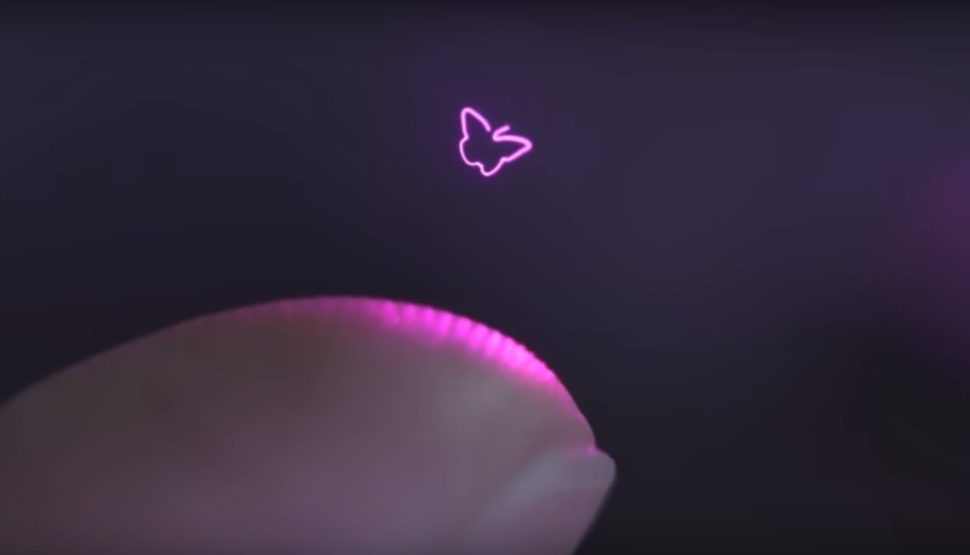Researchers are now developing a 3D projection technique that will turn a so-called Star Wars technology into a reality.
There is no doubt that one of the most impressive technologies in Star Wars universe was R2-D2’s holographic messaging system. Who could forget the first time Luke Skywalker saw the 3D projection of Princess Leia in A New Hope?

“You know bout you’re my last hope…” -Drake ‘Hotline Bling’
Over three decades ago, what was ‘futuristic’ was also pure science fiction. Now, researchers are almost a step away from turning this Old Republic technology into a reality. In a paper published in the journal Nature, physicists from the Brigham Young University explained how they managed to display Star Wars-like 3D images of objects.
“We always had in the back of our mind the idea to create the Star Wars Princess Leia moment,” Daniel Smalley, lead author of the study, was quoted as saying.
@BYU researchers developed a 3D projection tech that produces clearer 3D images than hologramsClick To TweetThe technology dubbed by researchers as Optical Trap Display allegedly manipulates unseen specks in the air to produce 3D images that are clearer and more realistic than holograms.
Unlike holograms that are just two-dimensional and may disappear when a person moved behind the images, the new tech creates 3D projections that are visible from anywhere.
New 3D Projection Technology
According to Smalley, their 3D projection technology works by first isolating a cellulose particle in a photophoretic trap made up of spherical and astigmatic aberrations. Then, both the particle and the trap will be scanned in a display volume while being hit by red, green, and blue light.
The process results in a three-dimensional image floating in free space. It displays with “a large colour gamut, fine detail, and low apparent speckle.”
“This platform, named the Optical Trap Display, is capable of producing image geometries that are currently unobtainable with holographic and light-field technologies, such as long-throw projections, tall sandtables and ‘wrap-around’ displays,” Smalley and his colleagues wrote in their paper.
Another advantage of Optical Trap Display over hologram is that its image points can be seen from nearly all angles. This is because no bounding aperture limits the radiation produced by the device.
“By contrast, holographic image points are not visible unless they lie on a line that begins at a diffractive two-dimensional (2D) surface (or an image of that surface) and ends at the viewer’s eye. This limitation, described as ‘clipping’ or ‘vignetting,’ persists regardless of the composition, resolution or orientation of the hologram,” the researchers further explained.
A 360° in-plane viewing can be achieved by a hologram. Yet, the maximum viewing angle is smaller and decreases significantly as the image point moves farther away from the display surface. On the other hand, a free-space volumetric display can achieve a 360° in-plane viewing angle around every image point at any depth.
Currently, Smalley’s device can only produce thumbnail-sized 3D projections. However, the researchers plan to scale up the system in the years to come. They believe that their new technology may be used to improve medical surgery procedures and business communications in the future.
“If we make as much progress in the next four years as we made in the last, I think we will be successful making a display of useful size. Leia is on the way for real this time,” Smalley went on to say.



















I’m very excited to see where this technology will take us. This type of innovation is essential to achieve something like a ‘holo-deck’ where you don’t need glasses or other tools to experience an augmented reality.
Totally agree. The applications of this technology are so far reaching. Looking forward to seeing it mature.